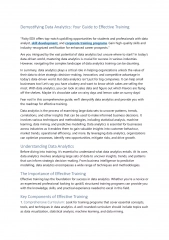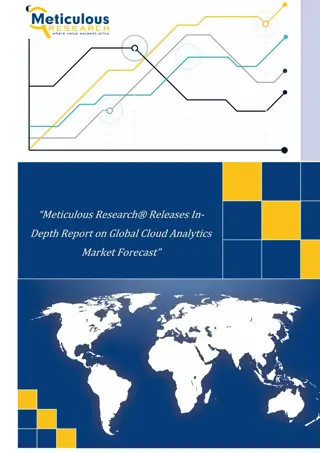Enhancing Capacity Planning for Peak Demand and Flexible Resource Requirements
Addressing the challenges in identifying capacity needs for utilities and regions, the discussion covers PowerSimm's approach compared to other modeling tools, resource capability characterization, and regional resource sharing opportunities. The article also reviews comments on NorthWestern's system optimization study and resource adequacy evaluation, emphasizing the importance of comprehensive portfolio analysis for effective planning. Additionally, it delves into capacity requirements for peak demand and flexibility resources in maintaining grid stability.
Download Presentation

Please find below an Image/Link to download the presentation.
The content on the website is provided AS IS for your information and personal use only. It may not be sold, licensed, or shared on other websites without obtaining consent from the author.If you encounter any issues during the download, it is possible that the publisher has removed the file from their server.
You are allowed to download the files provided on this website for personal or commercial use, subject to the condition that they are used lawfully. All files are the property of their respective owners.
The content on the website is provided AS IS for your information and personal use only. It may not be sold, licensed, or shared on other websites without obtaining consent from the author.
E N D
Presentation Transcript
Flexible and Peak Demand Resource Requirements Presented by: Gary Dorris, PhD gdorris@ascendanalytics.com 303.415.0311 June 8, 2017
Questions Addressed How does PowerSimm identify capacity and capacity attribute needs for an individual utility and for the region? How does it differ from how other modeling tools identify needs? How does your modeling tool characterize the capabilities of resources to provide capacity and capacity attributes? How does it differ from other tools? How does your modeling approach address the opportunity for regional resource sharing? 2 ascend analytics
Addressing Commission Comments from the 2015 IRP ETAC April 26, 2017 Comment Topic Issue Response NorthWestern has not completed a system optimization study with its entire fleet of resources to determine what capacity its base portfolio provides and, thus, what type of incremental capacity is needed The Plan provides little analysis and documentation that supports its selected capacity acquisition rate produces minimal resource adequacy by 2028. NorthWestern s resource adequacy should be measured by its retail load s position relative to the region s or interconnection s peak demand, while taking into consideration import limitations. An exhaustive portfolio analysis was conducted across hundreds of possible future states. See slides 7-10* Ascend performed an optimal expansion plan. see slide 10* Agree that the discussion, explanation of methodology, and presentation of results was limited. Agree in principal. NWE and Ascend are expanding analysis to encapsulate the broader WECC environment. See slides 33 54* Resource adequacy The Commission shares many of these concerns and finds that NorthWestern s 2015 Plan falls short of an evaluation of the full range of cost effective supply and demand-side management options This is incorrect except for demand side management, which was not evaluated. Going forward, the full suite of technologies identified by the commission in their comments will be evaluated. See slides 16 20* Scope of resource alternatives 3 ascend analytics *Slides refer to April 26, 2017 ETAC
Capacity Needs 1) Capacity to Meet Peak Demand Requirement: Procure adequate supply to serve peak demand given potential for generation outages and intermittency of renewable supply Measurement: Traditionally reserve margin = firm capacity in excess of peak load Assessment of need: Best modeled by simulating available capacity and load over a large variety of future conditions for meteorology and generation outages 2) Flexibility Resource Needs Required by regional balancing authorities to keep system at 60 Hz Ascend s PowerFlex determines the flexible resource requirements as a function of renewable generation Fast Ramp (Regulation) ~ 1 minute ramp Slow Ramp ~ 15 minute ramp 4ascend analytics
Calculation of Loss of Load Probability Weather drives load and renewable generation Simulated renewables generation & load Simulated generation outages Hydro Gen + Capability to serve peak load = Simulated Weather Renewables Generation outages PowerSimm PowerSimm captures the captures the interactions of weather interactions of weather renewables, hydro, and load and renewables, hydro, and load and generation generation Note: Competing models to PowerSimm don t simulate full generation outages with expected duration and variance in outage duration. Traditional models use an expected outage rate times available capacity in a deterministic construct. Thus, they can t calculate probability of outages. Load 5ascend analytics
Resource Adequacy PowerSimm s simulation framework captures the structural relation of weather with renewables and load over a wide range of future conditions MW Short 120 100 80 MW Short 60 40 20 0 60 Hours Short by Year 50 Hours (Load > Capacity) MEAN 40 P5 P95 30 20 10 0 6ascend analytics
Flexibility Resource Requirements NWE is now required to meet the RBC standard for Area Control Error (ACE). At every moment, dynamic ACE limits are applied as a function of WECC frequency instead of the constant ACE limit used under CPS2. This change in standard ensures that all balancing area responses to ACE move in the right direction for overall grid frequency. The balancing area can exceed limits for 30 minutes before it is considered a violation. WECC Frequency > 60 Hz upper limit on ACE WECC Frequency < 60 Hz lower limit on ACE 7ascend analytics
Minutely Dispatch and Regulation 2020 Baseline + 200 MW Wind + 100 MW Solar Solar 1 MW ~ 0.2 MW flexible resources Wind 1 MW ~ 0.6 MW of flexible resources Changes in gradient of net load Base load 3 s in gradient Net load 7 s in gradient 8ascend analytics
Total Flexibility Requirements in NWE Minimizing Fast Ramp Flexible requirement = 15 minute ramp (Inc) + 1 minute ramp (Regulation) Illustration of Flexible Capacity Requirement Regulation Capacity Flexible Requirements Year Scenario Inc Capacity 2016 2017 2018 2019 2020 2020 2020 Base Base Base Base Base 168 169 186 226 226 244 329 28 28 33 40 40 44 65 196 197 219 266 266 288 394 +100 MW Solar +200 MW Wind + 100MW Solar + 200MW Wind 2020 333 67 400 Increasing renewable penetration causes growth in system flexibility requirements. 9ascend analytics
Flexible Resource Requirements as a Function of Geographic Diversity Increasing geographic diversity of renewable resources helps mitigate the variability of renewable output. 10ascend analytics
Market Potential for Capacity Energy Flows throughout the WECC PowerSimm performs fundamental modeling of the WECC region inclusive of transmission congestion and losses determined through an integrated generation dispatch and DC optimal power flow model. Major interties support seasonal flow of power N to S (summer) and S to N (winter) California imports about 20% of energy During the solar peak, CA exports to the neighboring states. Wind and hydro are predominant in the Northwest Solar dominates CA, but also significant penetration in AZ, UT, NM, NV, NM, and CO 11ascend analytics
Market Potential for Resource Adequacy Fundamental modeling with PowerSimm suggest contracting for capacity and flexible reserves can be attractive but potential physical limits exist: Transmission constraints Regional deficit of flexible capacity Regulation prices in CA increased in 2017 by 400% over previous four years Regional capacity deficit projected ~ 2020 Renewables provide negligable amount of dependable capacity Modeling is no substitute for testing the market with solicitations Solicitation will provide the most competitive responses for evaluation Economic offers need to assessed relative to portfolio needs 12ascend analytics
PowerSimm Compared to Other Solutions Capability Competitors Ascend Detailed sub hourly dispatch optimization Flexible requirements as function of renewables X Integrated ability to calculate peak resource (MW) X Simulated weather, load, renewables, price X Substantiate meaningful uncertainty X Match market vols, heat rates, and prices X Optimal expansion planning under uncertainty X Transmission modeling Statistical summarization of output variables X Rapid response parallel summarization process X 13ascend analytics
Contact Information Offices & Officers Headquarters: Gary Dorris President +1 (303) 415 0311 gdorris@ascendanalytics.com 1877 Broadway St Suite 706 Boulder, CO 80302 (303) 415-1400 Other Offices: Oakland, CA Bozeman, MT Providence, RI
Changing Market Dynamics as a Function of Renewables Hour 15ascend analytics
Observed and forecasted increases in price volatility through time WECC 10% 7% Mid-C Volatility of DA LMP 25% 11% 16ascend analytics
Relationship between renewables and market volatility WECC Market Analysis Forecast Recorded Forecast Recorded Market price volatility is expected to increase as renewable generation increases. Greater premium on highly flexible capacity By 2027 the growth in price volatility diminishes. Volatility peaks during the summer months. 17ascend analytics























